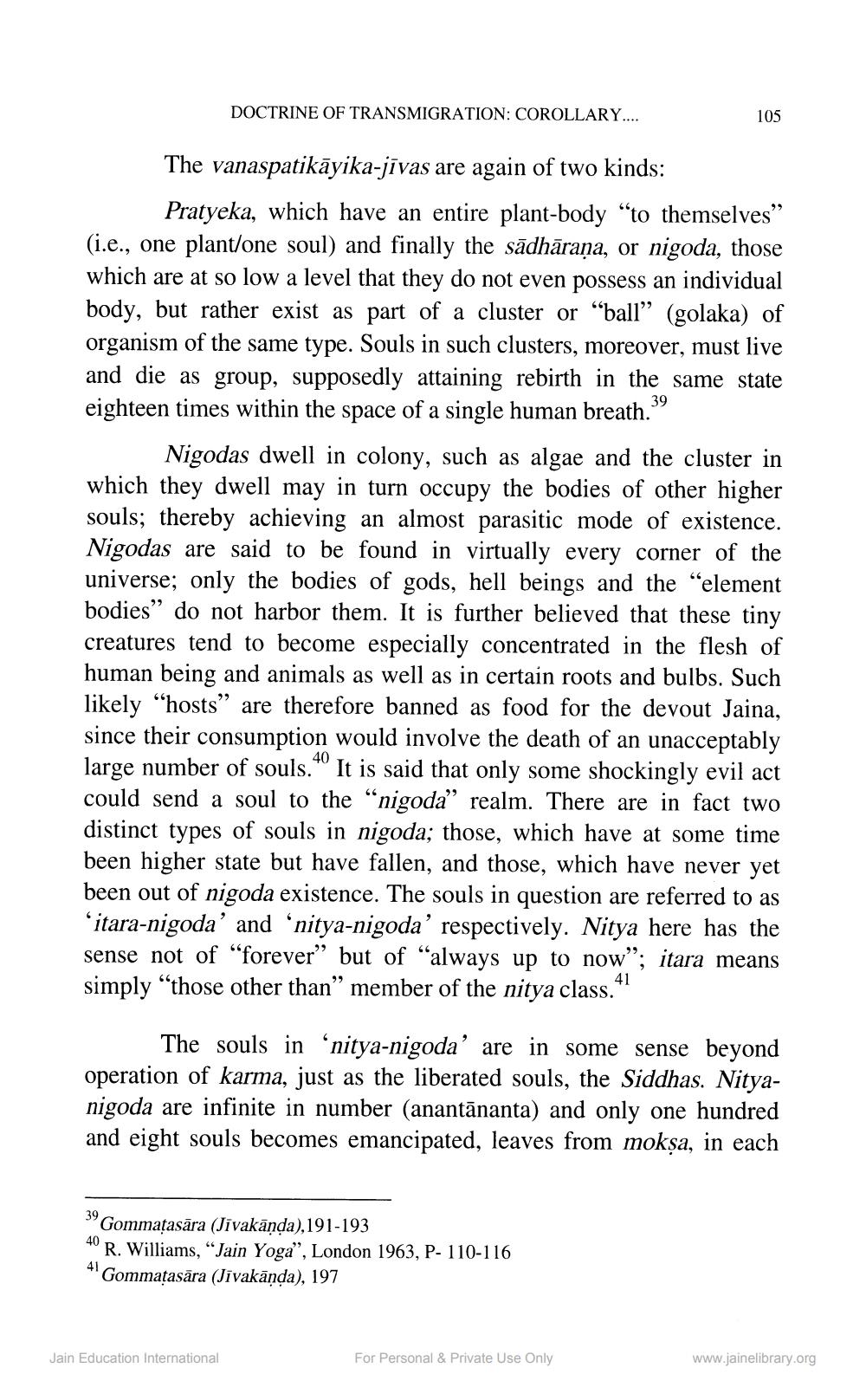________________
DOCTRINE OF TRANSMIGRATION: COROLLARY....
105
The vanaspatikāyika-jīvas are again of two kinds:
Pratyeka, which have an entire plant-body “to themselves" (i.e., one plant/one soul) and finally the sādhāraṇa, or nigoda, those which are at so low a level that they do not even possess an individual body, but rather exist as part of a cluster or “ball” (golaka) of organism of the same type. Souls in such clusters, moreover, must live and die as group, supposedly attaining rebirth in the same state eighteen times within the space of a single human breath."
Nigodas dwell in colony, such as algae and the cluster in which they dwell may in turn occupy the bodies of other higher souls; thereby achieving an almost parasitic mode of existence. Nigodas are said to be found in virtually every corner of the universe; only the bodies of gods, hell beings and the “element bodies” do not harbor them. It is further believed that these tiny creatures tend to become especially concentrated in the flesh of human being and animals as well as in certain roots and bulbs. Such likely "hosts” are therefore banned as food for the devout Jaina, since their consumption would involve the death of an unacceptably large number of souls.' It is said that only some shockingly evil act could send a soul to the “nigoda” realm. There are in fact two distinct types of souls in nigoda; those, which have at some time been higher state but have fallen, and those, which have never yet been out of nigoda existence. The souls in question are referred to as 'itara-nigoda' and 'nitya-nigoda' respectively. Nitya here has the sense not of “forever” but of “always up to now”; itara means simply "those other than” member of the nitya class.
The souls in ‘nitya-nigoda' are in some sense beyond operation of karma, just as the liberated souls, the Siddhas. Nityanigoda are infinite in number (anantānanta) and only one hundred and eight souls becomes emancipated, leaves from mokșa, in each
Gommatasāra (Jivakāņda), 191-193 40 R. Williams, “Jain Yoga”, London 1963, P- 110-116 *'Gommatasāra (Jīvakāņda), 197
Jain Education International
For Personal & Private Use Only
www.jainelibrary.org




